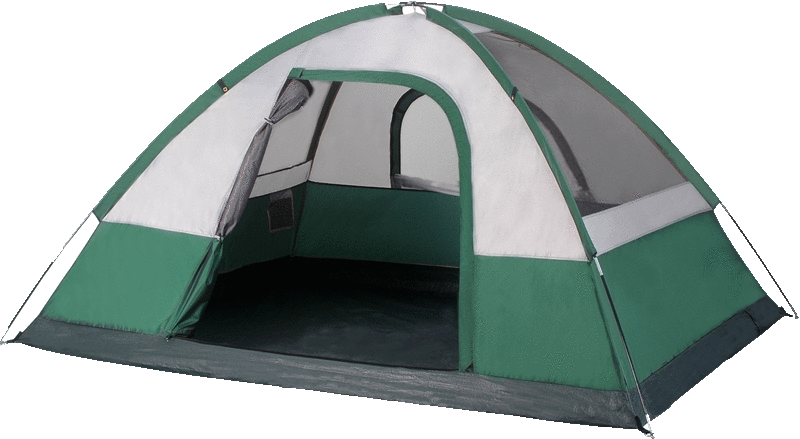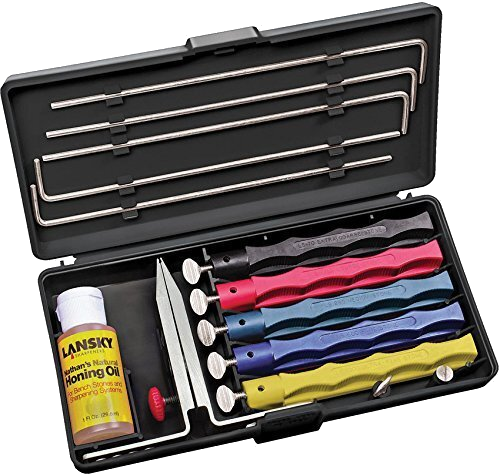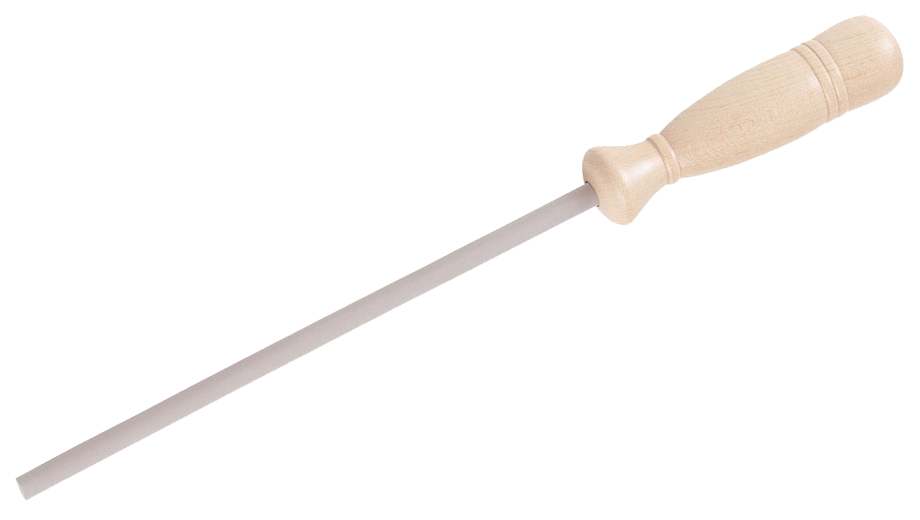
| Articles | Documents | Equipment | Events | Links | Membership | Miscellaneous | Scrapbook | Targets | What's New |
|
Bladeology Lansky Sharpeners | November 2018 | ||
| Dan Martinez
| |||
|
Using this method, I was able to sharpen knives to a degree, but never really “shaving
sharp” as was the goal. Often I would just keep going and going, always looking for
that fine edge, never really achieving it, but actually doing nothing more than grinding
away more and more of the blade.
Many years later, a co-worker introduced me to the Lansky Sharpening System. It’s very
similar to sharpening on an oiled whetstone, but the stones are attached to plastic
holders, which are in-turn attached to steel rods. You clamp the spine of the knife
blade into sort of an aluminum guide vise. The back of this vise turns at a 90° angle
and has several holes in it. When you insert the steel rod into one of these holes
(attached to a stone holder), this sets a given angle of stone against blade. The
stones come in several degrees of grit from coarse to fine. The kit comes with honing
oil, but you can use any light machine oil when you run out.
I used this system for many years, and it certainly seems to do the job, and gave me
greater confidence because it forces you to keep the sharpening angle constant.
But recently, my favorite sharpening system is a whole lot simpler. It is also by
Lansky, but all it is, is a round ceramic sharpening stick with a wooden handle. You
use it just like you use a sharpening steel.
If you are familiar with a sharpening steel, you know that a steel does not actually
sharpen. What it does, is re-align the micro-structures on a blade’s edge. If you
could magnify the edge of a knife blade, it might look like a bunch of tiny little saw
teeth. During use, these micro teeth get bent over to one side or the other of the edge.
The sharpening steel straightens them back out and into alignment with each other.
The ceramic rod does this as well, but it does actually remove a tiny bit of material.
There is no need to use any oil with the Lansky Sharp Stick. You use it dry. You will
get metal particles eventually clogging the ceramic’s pores though. All you do then is
rub it under water, flowing or not, to remove the metal particles. Then dry, and you
are back in business.
One of the big advantages of the ceramic rod over a flat whetstone, is that you can use
it to sharpen recurved blades. A recurved blade has a section that curves inward toward
the spine of the blade.
I can get my blades sharper with a few quick strokes, using this simple and inexpensive
ceramic rod than any other method I have used over the years.
© Honeywell Sportsman Club. All rights reserved. | |||
The Honeywell Sportsman Club is a small group of shooting and outdoor enthusiasts in the
Phoenix, Arizona area. Our website is ad-free and completely free to use for everyone.
But we do have expenses that we need to cover, such as the web hosting fee and our liability
insurance. If you enjoyed visiting our website, found it useful in some way, or if you enjoyed
reading this story, please consider tipping us through our PayPal donation jar below. Thanks for visiting, and come back soon.
![]()

Articles
Docs
Eqpt
Events
Join
Links
Misc
New
Pix
Targets



